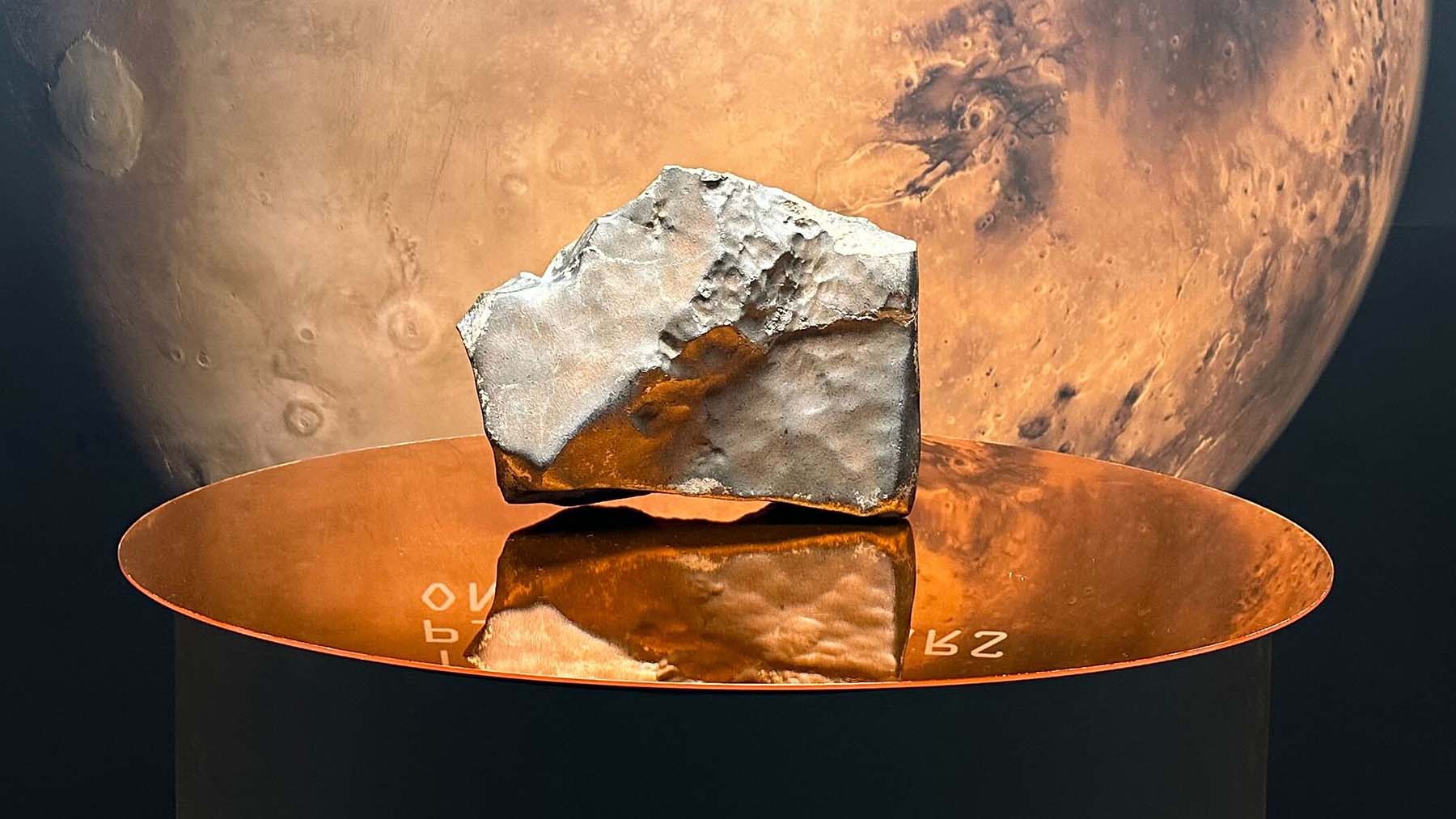A rock from Mars sat in the sands of the Sahara, untouched and unnoticed, until a meteorite hunter picked it up in Agadez, Nigeria last year. It weighed nearly 25 kilos, the biggest Martian meteorite anyone’s ever found on Earth. And now it’s gone. Yes, sold. At Sotheby’s. For just over $5.3 million.
No one knows who bought it. No one knows where it’s going. All we know is that a piece of another planet, blasted off the surface of Mars by a violent impact, traveled through space for who knows how long, crash-landed in the desert… and is now the most expensive space rock in private hands.
The meteorite’s official name is NWA 16788, and it’s considered extraordinary. Not only because it’s massive, but because it’s almost perfectly preserved. And there’s barely any damage from Earth’s environment. That suggests it fell recently. And inside, it’s full of secrets. The previous record-holder, Taoudenni 002 weighned 14.5 kilos.
This rock is about 20% of something called maskelynite, a kind of natural glass that forms when rock gets hit with extreme heat and pressure, like, during an asteroid collision on Mars, for example. And the rest of the meteorite is a mix of pyroxene and olivine, which gives it that grainy, volcanic texture. That makes this piece a rare class of Martian rocks called micro-gabbros that scientists have only identified a few times.
A true tale from the stars that’s worth millions
Once upon a time a lost rock from Mars fell to earth, and it was picked up by a human in the desert. Well now, it is probably sitting somewhere fancy, maybe in a display case. Maybe in a safe. Maybe in a lab.
The rock was first confirmed as Martian by experts at the Shanghai Astronomy Museum. From there, it ended up in the hands of collectors. And eventually, it made its way to Sotheby’s, where auction estimates hovered around $2 to $4 million. It sold for more. Way more. $5.296 million, to be exact. The identity of the buyer? Kept under wraps.
A meteorite like this doesn’t come around often
The scientific value of NWA 16788 is enormous. Because it’s so fresh, so untouched. It’s like a time capsule. According to the Sotheby’s listing, the Mars rock shows “minimal terrestrial weathering.” Basically, it holds information about Mars’ volcanic history, about ancient impacts and about how planets form and break apart.
But here’s the thing: the buyer remains anonymous and no one knows what he plans to do with it. Will they donate it to science? Share it with museums? Or will it vanish into a private collection, out of reach?
Luxury or science?
Some researchers are already worried. Steve Brusatte, a paleontologist from the University of Edinburgh, didn’t mince words before the auction. “It would be a shame if it disappeared into the vault of an oligarch,” he told CNN. “It belongs in a museum, where it can be studied, and where it can be enjoyed by children and families and the public at large.”
Others are more hopeful. Julia Cartwright, a planetary scientist at the University of Leicester, believes that even in private hands, the rock might still help science. “The scientific interest will remain,” she said. “And the new owner may be very interested in learning from it.”
Both could be right or wrong because the truth is that we don’t know how this story ends yet.
But here’s what we do know: a rock that formed millions, maybe billions of years ago on Mars, survived a cosmic explosion, drifted through space, and crash-landed in the sands of Agadez, has now become part of Earth’s story too and a very luxourius one.
